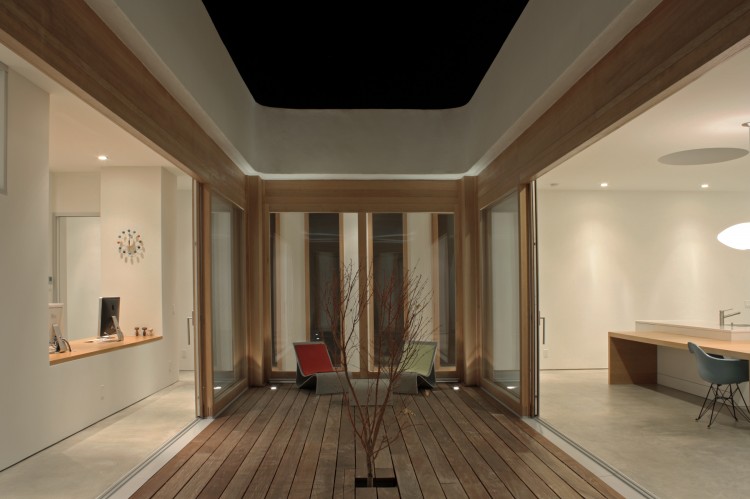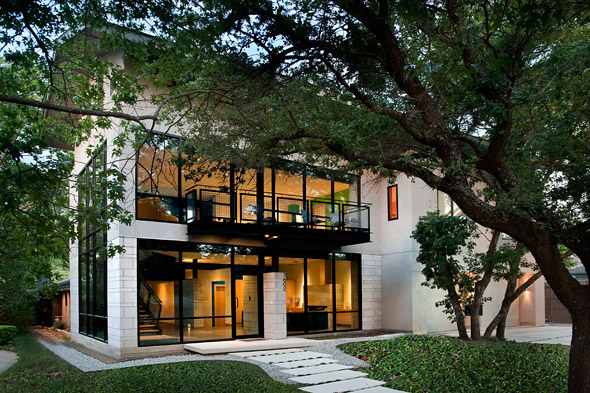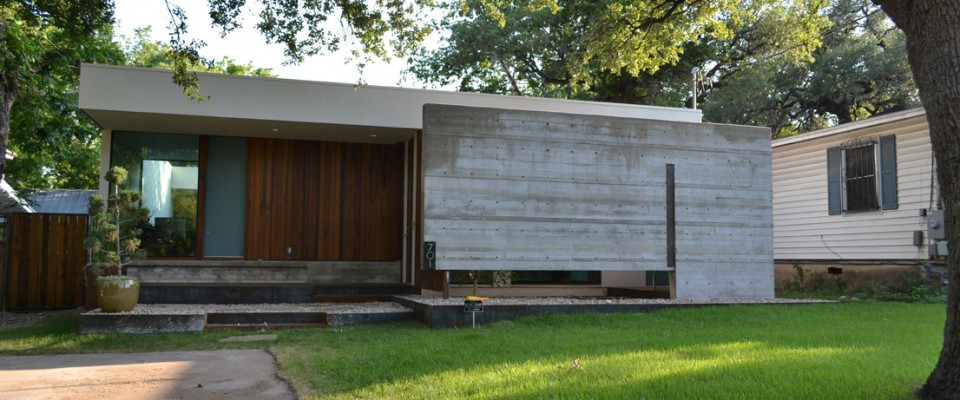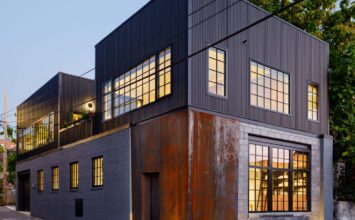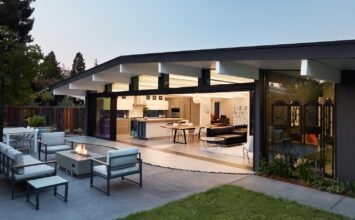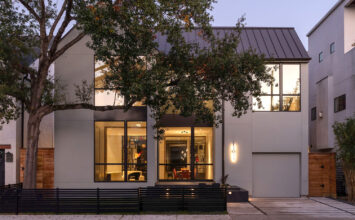
Many consider the starting-point of prefab to be The Crystal Palace, a giant glass-and-iron structure designed by Sir Joseph Paxton to house the Great Exhibition of 1851 in London. Here, more than 14,000 exhibitors from around the world gathered to display examples of the latest technology developed from the Industrial Revolution — and no more fitting a home was there than The Crystal Palace, which itself represented a radical architecture advancement. A marvel of pre-fabricated technology, Le Corbusier referred to the Crystal Palace as the “herald of a new age” of modernity.
Over the years, “prefab” has become a catch-all term for a building process where parts are manufactured off-site. As a building metholodology, prefab minimizes waste and maximizes energy efficiency – and cuts cost and construction time, to boot.
This week, we’re featuring Roger Kurath, a Swiss-born, LA-transplant architect who has become an industry thought-leader in prefab and high-performance design. We sat down with Roger to discuss what the US can glean from the Swiss approach to building and design and the promise of prefab, and he gave us a sneak-peek of a recently-completed mid-century remodel in the Pacific Palisades.
Q&A w/ Roger Kurath, design*21
Tell us about your education and training in Switzerland, and how your Swiss roots influence your design work.
I started my education with an apprenticeship as an architectural draftsman, and then I went on to structural engineering school with a main focus on project management. After that, I went and got my Bachelor of Architecture from a Swiss university. My Master of Architecture I got from UCLA.
My education in Switzerland required me to work 80% in an architectural office as well as part-time on construction sites as a roofer, electrician, framers and other small jobs, all part of the “hands on” education.
After completing my education as an architect, I worked in various architectural offices in Switzerland in all fields of architecture, starting as a simple draftsman all the way up to project manager.

What drew you to Los Angeles, and why did you choose to start your firm there?
As I was working in Switzerland, I felt the need to educate myself more and set myself the goal of getting my master’s degree in architecture in the US. I applied at several schools and after an interview was accepted at UCLA. After completing my education, I received a work permit and worked for a local architectural office in Venice Beach to experience the craft locally. Soon after that, a potential client asked me to design a vacation house for her in northern Idaho. This design never was built, but because of her connections, I met my first client in Los Angeles and got the chance to design and build their dream home in Marina Del Rey. This was the starting point of opening my own design office, design*21, LLC, in Los Angeles.

You frequently speak and give lectures on what we in the US can learn from the Swiss approach to building and design. What are the sound bites?
Several years ago, I opened a design office in Switzerland where we design and build projects with the main focus on prefabrication and energy efficient design and construction. Since I am building in the USA as well as in Switzerland, I’ve been asked to lecture and share my experiences and knowledge. The main focus of my talks is the difference between design and construction in Switzerland and the USA, how they compare, and what we can learn from each other.
In a nutshell, the main difference between construction in the USA and Switzerland is that houses in Switzerland need to perform with a high efficiency whereas in the USA it’s more about good products that need to be used for the construction.
The system in Switzerland is called “MINERGIE” (a performance-oriented system) where there are several levels that can be achieved. In the USA, the system is called LEED (a product-oriented system).
Since we are working on both continents, we always try to implement some of the basic ideas of the Swiss system to make the buildings here perform better.
Some of the simple elements are;
– High efficient insulation
– Thicker walls
– More efficient heating units
– Orientation of the windows and size of the openings
– Overhangs
– Other small elements that always depend on the location of the property and the budget of the client

What do you think of the current state of prefabrication in modern design, and where do you see it going?
With prefabrication, we try to have a faster building time as well as achieve a higher precision in the building process. In my personal opinion, the prefabrication process in the USA is still not as advanced as it should or could be. The main issues are transportation and the inspection process required by the local building departments. At the moment, the construction cost of a prefab house is still the same, if not higher, than a custom home, and as long as that doesn’t change it will be difficult to convince clients to build a prefab house.
In Switzerland, the process of prefab houses is much more advanced and works very well. For example, we can complete a three-story, multi-family dwelling in a ski-resort under very difficult weather and snow conditions in 8 months, from the first sketch to completion. On top of that, the building is also certified as a “MINERGIE-P” Building. This is equivalent to Platinum LEED in the USA.
I am sure that the building process in the USA will have to change and adapt in the near future, and we will get to the point where prefabrication is the best way of building a high-efficient building. All we need is a forward-thinking developer who is willing to push the envelope and learn from some European manufacturer ideas, adapt the codes and design, and develop big projects in such a construction method. It is possible.
On our side, we try to implement partial prefab ideas for now and will slowly get to the point where we can design and build complete prefab houses that are cheaper, have a shorter construction times, are of higher quality, produce limited construction waste, and are much more energy-efficient than what we are used too today. We are getting closer to those goals.

You recently completed a remodel of a mid-century home in Pacific Palisades. What can you tell us about this project?
A recent residential project of ours is a remodel of a mid-century post and beam residence originally built in 1962 in Pacific Palisades, CA. The main objective of the remodel was to maintain the beauty and simplicity of the post and beam design, not changing the roofline but working with the existing outline of the house and upgrading it with new building materials.
After extensive research about the residence, we were able relocate the original plans from 1962. As a requirement by city guidelines, the additional cover square footage was limited to 500 square feet, and the roofline could not be changed or raised.
We maintained the overall room organization in the house. The kitchen was opened up with a direct view over the ocean as well as direct access to the backyard. Over the island, an additional skylight was added to bring direct sunlight to the cooking area.
The master suite is located in the southwest corner of the house and has a big walk-in closet as well as big sliding doors. The master bathroom, located on the west side of the, has pocket sliding doors that open the bathroom up to an outside deck with a Jacuzzi. The oversized shower has a simple floor to ceiling glass wall and big format tiles.
The living room, kitchen, dining room and entrance have a clean white tile and the formal living room has oak hardwood flooring.
As originally planned in 1962, a pool was added to the backyard.
The material selection for the remodel was kept to a minimum to emphasize the quality and beauty of the post and beam design.



